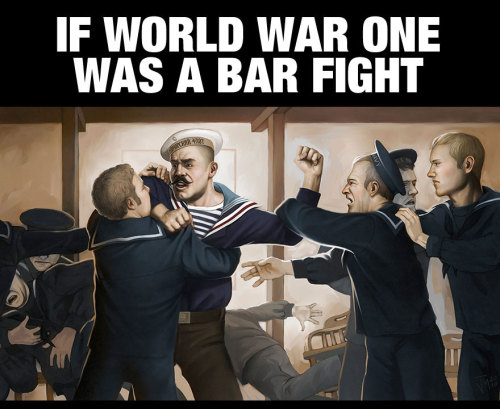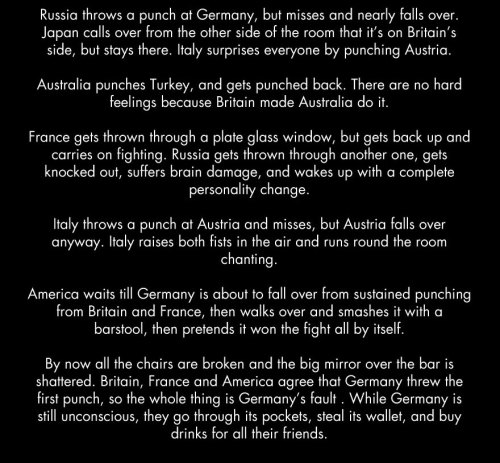Ww1 History - Blog Posts
Because one thing has become clear to me: you can cope with all the horror as long as you simply duck thinking about it – but it will kill you if you try to come to terms with it.
— Erich Maria Remarque, All Quiet on the Western Front
I'm still sitting here and you are still lying there, and there are so many things we should say to each other, but we shall never be able to.
— Erich Maria Remarque, All Quiet on the Western Front
siiigh give me ideas for well-researched historyposts
i have no sleep and i must research


Deux rares wagons de la Grande Guerre viennent d ´arriver au Musée des 2 Guerres de Meaux (77) , Seine et Marne, Ile de France (France)
Un wagon de transport de troupes et un rarissime wagon d ´artillerie qui était couplé avec des pièces de très gros calibre installé sur rails.
Elizabeth Southerden (1846-1933) dragoon Rgt outside Saint-Malo door (Dinan) Britanny , France
Elizabeth Southerden Thompson, later Lady Butler is arguably the greatest British military painter of the nineteenth-century, who in her own words 'never painted for the glory of war, but to portray its pathos and heroism'. She was born in Switzerland and trained at the South Kensington Schools in London and in Florence at the Accademia di Belle Arti. She initially focused on religious subjects but was inspired by the work of Jean Louis Meissonier, in Paris in 1870, to paint battle scenes. The Roll Call, depicting the courage and endurance of Grenadier Guards mustering after an engagement during the Crimean War, gained critical and popular success when it was exhibited at the Royal Academy in 1874. It was fêted by the Royal Family, and her patron Mr Galloway, who had commissioned it, was obliged to surrender the painting to Queen Victoria, where it remains in the Royal Collection.In 1877 she married Colonel William Butler and travelled to the far reaches of the Empire. When her husband, recently honoured with a knighthood and promoted to Brigadier General, was invalided home from his post at Wadi Halfa in 1886, they settled near Dinan in Brittany where To the Front was painted. It is set during the Franco-Prussian War (1870-1) and depicts the French Dragoons heading to the front through the Porte St Malo in Dinan. It is unusual in the artist's oeuvre in its French subject matter and in the inclusion of women and children. Members of the Butler family and household are depicted in the crowd, and the woman in the lower-left corner waving a handkerchief is a self-portrait. Next to her is her daughter Elizabeth, and the two small boys further along the row are her sons Patrick and Richard. The picture was completed at the family's home in Wicklow, Ireland. Following her husband's knighthood in 1886 this was the first work she exhibited at the Royal Academy as Lady Butler. Il s'agit du 24e régiment de Dragons. Cette artiste a vécu aux Réhories à Dinan. Diane Monier Moore parle de ce tableau dans son livre " Dinan the English colony 1800 1940 Dinan la colonie anglais" pages 413 414 415.

US Trench Knife model 1918 from WWI US AEF (WWI)
First one : L.F & C- 1918 US Made .
Second one : « Au Lion » P.O. to a French maker by the US AEF Ordnance Corps (scarce model from 1918)
These knives will be seen also in the hands of paras and gliders of the 101st (screaming eagles) and 82nd (All American) Airborne divisions during the D-Day !
Poignard de tranchée US modèle 1918 du corps expéditionnaire américain (AEF) :
1er : fabrication US par L.F & C en 1918 .
2ème : fabrication française pour l’armée US marquée : « Au Lion » sur la lame et juste U.S.1918 sur la poignée en bronze (version rare)









Armistice : 11 /11 (Novembre) 1918 à 11 H !!!
Adrian helmet of Health Service , surgery case and French first aid pouches (WWI)
Casque Adrian Service de Santé, pochette de chirurgien, pansements de Premier Secours , Manuel de Médecin Auxiliaire (1914-1918) !




« Aux Pelotes d’Or » Médaille d’or exposition internationale de Paris : fil à coudre de Lin noir !!!
WW1 Sewing kit !!!!




![-[Arm The Homeless]-](https://64.media.tumblr.com/cbdc17409c52709b789076034e19ee09/tumblr_png9mobia41uru37o_500.jpg)